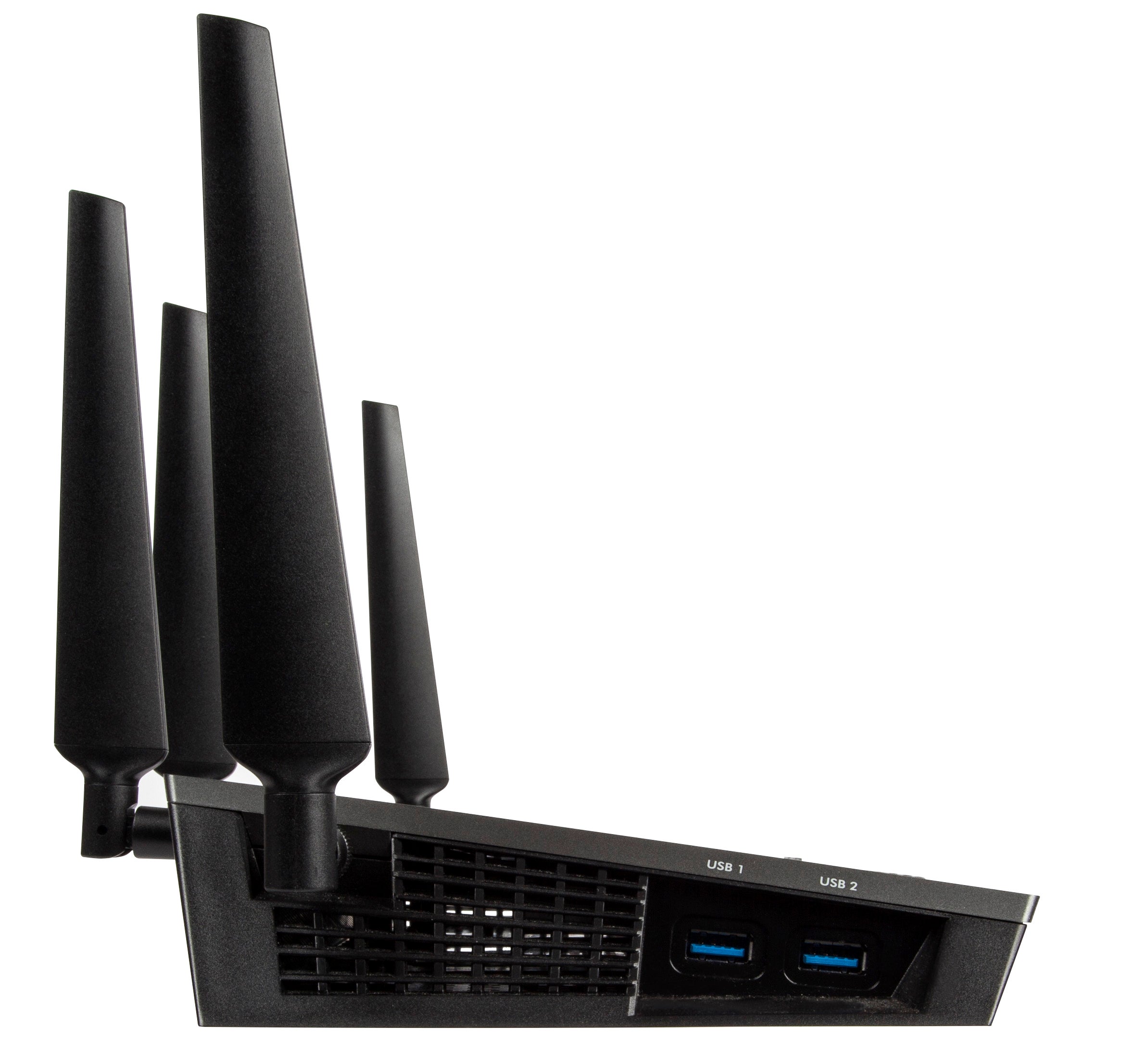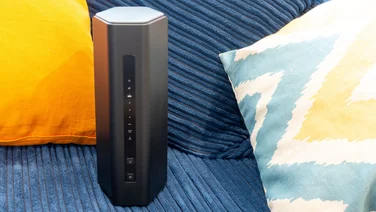To help us provide you with free impartial advice, we may earn a commission if you buy through links on our site. Learn more

The Netgear Nighthawk X4 R7500 is an 802.11ac router rated at providing combined throughput of 2,300Mbit/s across its 2.4GHz and 5GHz bands. That breaks down as 600Mbit/s on 2.4GHz and 1,730Mbit/s on the 5GHz band. The router is also available with a built-in ADSL and VDSL (fibre) modem, as the Nighthawk X4S D7800 (see below).
To help with carrying so much bandwidth, the routers have four external high-power antennas. The rest of the design is the usual fare we’ve come to expect from the Nighthawk range; sleek black lines and harsh, aggressive angles. White LEDs show you when there’s activity on the router’s four Gigabit Ethernet ports, wireless networks and other ports.

There are 13 LEDs in total, which could be distracting, but fortunately there’s a switch on the back of the router to disable all lights apart from the power indicator – a feature we don’t often see. Around the back is an Ethernet WAN port for connecting your ADSL, cable or fibre modem.
There are two USB3 ports for sharing printers and storage devices over your network via Netgear’s ReadySHARE service. You can also use ReadySHARE Vault for automated PC backups.

Configuring the router is a breeze if you use the Netgear genie app on iOS or Android. This automates much of the initial setup and gives you an easy way to monitor network performance and activity. Otherwise the more traditional web-based router admin interface has a functional and clean design that’s easy to navigate. Finding the settings for common functions such as setting up guest networks is pleasingly straightforward.
Wireless performance with our laptop’s integrated 802.11n adaptor was strong. On the 2.4GHz band we saw 26Mbit/s at 10m, which is around average, but this only dropped marginally to 22.4Mbit/s at 25m, which is one of the strongest results we’ve seen at that range. On the 5GHz band we saw 181.8Mbit/s and 114.8Mbit/s, which are above-average results, if not top of the pack. Once we switched to a Netgear A6200 802.11ac USB adaptor (£42 inc VAT from www.argos.co.uk), we saw 256.3Mbit/s and 219Mbit/s, which are around average scores for an 802.11ac router.

A theoretical throughput of 1,730Mbit/s on the 5GHz band is an impressive amount of bandwidth, but it’s also beyond the capabilities of your average integrated or USB Wi-Fi adaptor, even those rated for 802.11ac. This means to get close to the X4 R7500’s potential maximum performance you’ll likely need to use a second router in wireless bridge mode. This is an expensive way of doing things, but with two X4 R7500s in this configuration we saw 302.9Mbit/s at 10m and 279.6Mbit/s at 25m; an improvement, but not quite the leap we were hoping for considering we were using over £300 worth of network equipment.
Nighthawk X4S
The modem-equipped Nighthawk X4S D7800 (£270 from www.cclonline.com) also supports the slightly faster AC2600 Wi-Fi standard, but it’s unlike you’ll have any laptops or Wi-Fi adaptors that support such fast speeds.
We tested the X4S with a Plusnet home fibre broadband connection, and setup was a breeze. We simply plugged the router into the phone line and a laptop into the router. Once we’d opened a web browser we were taken straight into the router’s setup wizard, where we selected Plusnet as our provider. The router then detected the necessary settings automatically, and all we had to do was enter our username and password to get online. This had the added benefit that we no longer needed our BT Openreach modem, so had one less box to plug in.
The X4S also hugely improved our home Wi-Fi speeds. When connected to the router from a PC three rooms away equipped with an AC1900 Asus PCE-A68 wireless card, we saw an average 168Mbit/s throughput. This is a huge score, and far better than the 30Mbit/s average we saw from this wireless card and our original Netgear D6300 router.
Conclusion
The Netgear X4 R7500 has strong performance, and we appreciated how easy it was to configure. The X4S D7800 is also an excellent way to replace a fibre broadband modem and a wireless router with one box, but it costs an absolute fortune. We’d sooner buy a TP-Link Archer C9 and put up with a separate cable or fibre modem under the TV – a small price to pay for faster performance and a £160 saving.






